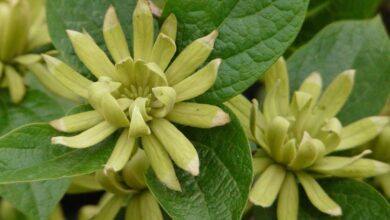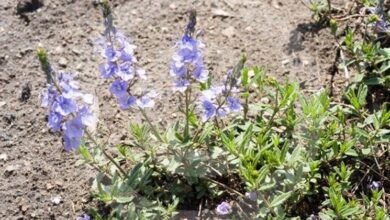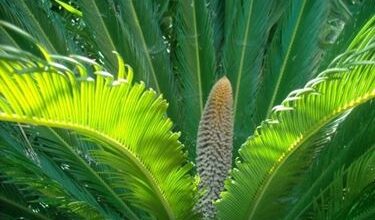Marquesa (Alocasia) – Types, Cares and Diseases

The more than 70 species of the genus Alocasia receive many names, the most popular being the » Marquesa plant «, although there are many more, such as Colocasia, Elephant’s Ear or Garden Taro . Others even call them Ñame, Alcolcaz or Manto de Santa María. Do you have one and you can’t identify the species? Do you want to know what their basic care is? In Friends of Gardening we do a review of these beautiful plants so that you learn to recognize and care for them .

Alocasia Taxonomy
| Kingdom: Plantae |
| Division: Magnoliophyta |
| Class: Liliopsida |
| Order: Alismatales |
| Family: Araceae |
| Tribe: Colocasieae |
| Genus: Alocasia |
Alocasia characteristics
Marquesas are characterized by having a bulb or rhizome . But what exactly does it mean? That its main stem is underground, storing essential nutrients, and from which new roots and shoots are born. We are also talking about perennial or lively plants , in fact, alocasias can accompany us for many years, exceeding 40 if they receive good basic care from us, in these cases we will observe a well-developed trunk with visible rings.
Focusing on other aspects of the plant, we observe large and elongated leaves, probably this is where one of its nicknames comes from: «Elephant ear». They are generally of an intense green hue, although they can be more or less dark, and even lilac, depending on the species.
We are also talking about a very robust plant, which can eventually reach 5 meters in height . In addition, Alocasia produces white bracts that surround the flowers of the plant and protect them.
Habitat and distribution of Alocasia
The Marquesa is a plant native to Asia, Oceania and South America, but more specifically, it stands out for its presence in tropical climates , which are characterized by high levels of humidity, thanks to abundant rains, as well as mild temperatures, between 20 and 20 24 ° C .
Some of the countries in which we find the Alocasia plant in the wild are: Australia, Sri Lanka, Malaysia, the Philippines, Indonesia, Borneo, Java, India, Thailand, Sumatra, Cambodia, Vietnam or New Guinea.
Types of Alocasia or Marquise
As we have anticipated in the introduction, there are more than 70 species of the Alocasia genus, being impossible to summarize them all, therefore, we will mention the 10 most common types of Marquesas :
| Alocasia macrorrhiza | Alocasia odora |
| Alocasia sanderiana | Alocasia amazonica |
| Alocasia polly | Alocasia zebrina |
| Alocasia calidora | Alocasia cucullata |
| Alocasia wentii | Alocasia fornicata |
 Alocasia amazonica
Alocasia amazonica Alocasia calidora
Alocasia calidora
 Alocasia cucullata
Alocasia cucullata Alocasia fornicata
Alocasia fornicata
 Alocasia macrorrhiza
Alocasia macrorrhiza Alocasia wentii
Alocasia wentii
 Alocasia polly
Alocasia polly Alocasia odora
Alocasia odora
 Alocasia sanderiana
Alocasia sanderiana Alocasia zebrina
Alocasia zebrina
Alocasia care
The Colocasia or Marquesa is a very resistant plant, which adapts wonderfully to different environments. Practically anyone can grow it, even with little knowledge of gardening. However, if you want to enjoy a radiant plant, follow these tips:
Substrate and subscriber
This plant adapts to practically any of the types of substrates that exist, although the ideal is that it has a mixture of soil and compost, sand and fibrous peat. As for the fertilizer, the ideal is to do it in spring , preferably using an organic fertilizer .
Location
The Marquesa plant, outside its optimal temperature range, which is around 22ºC, adapts better indoors or in greenhouses , although we can also keep it outdoors with a mild climate if we offer it good care. The ideal is to place the plant in a good pot , in this way we will better control its development and expansion. She needs a well- lit space away from direct sun , so placing her near windows will be a good fit for her.
Irrigation and humidity
The ideal is to keep the substrate moist , without puddles, since we could cause root rot. For this we must guarantee a well-drained soil . During the spring and summer we will water moderately, practically daily, but in winter we will space the waterings more, 2-4 times a week.
To promote good humidity, we will clean the leaves weekly and spray them with water in a moderate way, without the plant ending up excessively wet.

Reproduction
There are two ways to multiply the Colocasia. The first consists of planting the seeds that the flowers have offered us, however, we can also divide the new shoots that the rhizome offers , from which small stems with one or two leaves and their own roots will be born.
In this second case, the ideal is to leave the stem in a container with water, until the roots develop more. We will leave it for a week or two. Then we will place it in a pot and water.
Transplant
In the early stages, when the plant is very small, we can change it every few months. Later we will space the time and move it every 2-3 years to a larger pot.
Winter care
Especially when it is outside, we must protect the Elephant Ear from the cold. We will place the plant in a protected place, away from drafts . We will also cover it if temperatures drop below 0ºC.

Alocasia pests, diseases and problems
- Red spider, mites and mealybug : these are the most common parasites that affect the plant. They usually appear when the Elephant’s Ear is weakened and the conditions are not suitable, for example when temperatures are high or the area is very dry.
- The plant is discolored and burned : we have located it in an area that is too sunny or too dry. We will move it to the semisombram, we will increase the risks and humidity.
- The plant loses its leaves : it is being very cold or is placed in an area where it does not receive enough light.
- The plant loses its splendor : it needs a fertilizer.
Is Alocasia poisonous?
We must know that yes, Alocasia is toxic , both for people and for domestic animals. Although our pets will not be particularly attracted to it, it is advisable to keep it in a safe place, out of reach, to avoid possible poisoning. Direct contact causes skin and mucosal irritation , in addition, it can cause edema , that is, an accumulation of fluid in the tissues.





